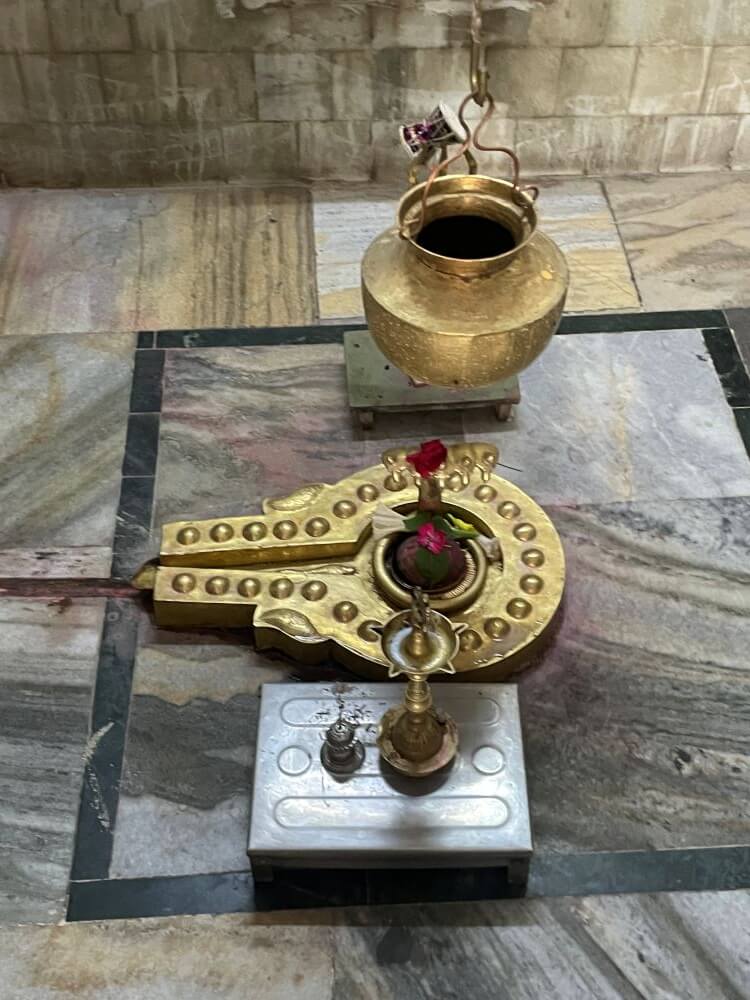
Among the temples of the Navnath Mahadevs, who are considered the protectors of Vadodara city, the Motnath Mahadev Temple is the largest. It holds the fourth position among the Navnath Mahadev temples. According to one legend, Lord Shri Ram established the Shivling here. It is believed that the temple in the Harni area was built about 600 years ago. Devotees strongly believe that the presiding deity, Mahadev, here is in a perpetual state of divine consciousness and fulfills all supplications. It is also believed that childless couples are blessed with children if they worship Motnath Mahadev with devotion.
According to mythology, in ancient times Vadodara was known as Vatpadrak or Vatpadrapur and was surrounded by dense forests. The forest area where the Motnath Mahadev Temple stands today was known as Hiranyavan, which gradually came to be known as Harni. This forest was once the site of penance for many sages. Sage Vishwamitra is said to have installed the Motnath Mahadev, one of the Navnaths, at this place. But another legend states that Lord Ram, along with Seeta and Lakshman, stayed here during their exile. As Lord Ram would not eat anything without first worshipping Shiv, and no Shiv temple was nearby, he established a Shivling here. Some legends also state that the Shivling is self-manifested (Swayambhu).
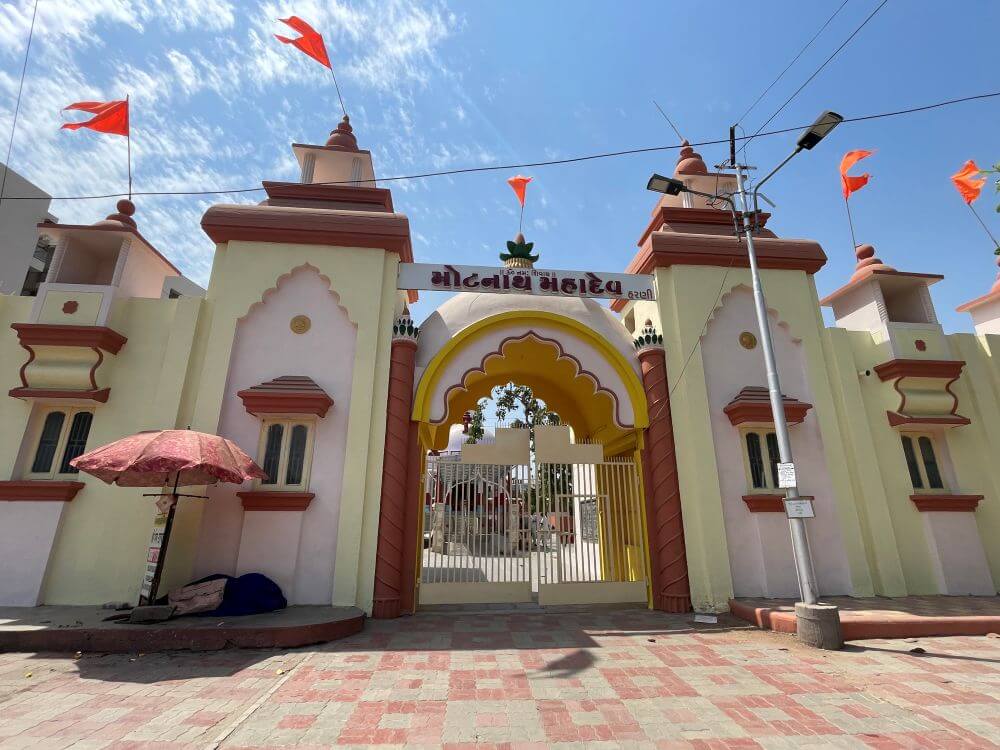 Located about 10 km from Vadodara city in the village of Harni, this temple is situated in a large compound opposite Motnath Lake. It is enclosed by high boundary walls on all four sides. The entrance to the premises features an arched gateway with a domed roof. A pathway for darshan (viewing the deity) is present, covered with a tin shed for the convenience of devotees. The temple is built on a high platform and is accessed by climbing 11 steps to reach the main hall (sabhamandap).
Located about 10 km from Vadodara city in the village of Harni, this temple is situated in a large compound opposite Motnath Lake. It is enclosed by high boundary walls on all four sides. The entrance to the premises features an arched gateway with a domed roof. A pathway for darshan (viewing the deity) is present, covered with a tin shed for the convenience of devotees. The temple is built on a high platform and is accessed by climbing 11 steps to reach the main hall (sabhamandap).
The Sabhamandap is open and supported by intricately carved stone pillars. It has a domed structure with a lion sculpture on top. At the front corners of the ceiling are statues of ascetics. Below the dome, on a raised platform, is the statue of Nandi, with a tortoise placed in front. 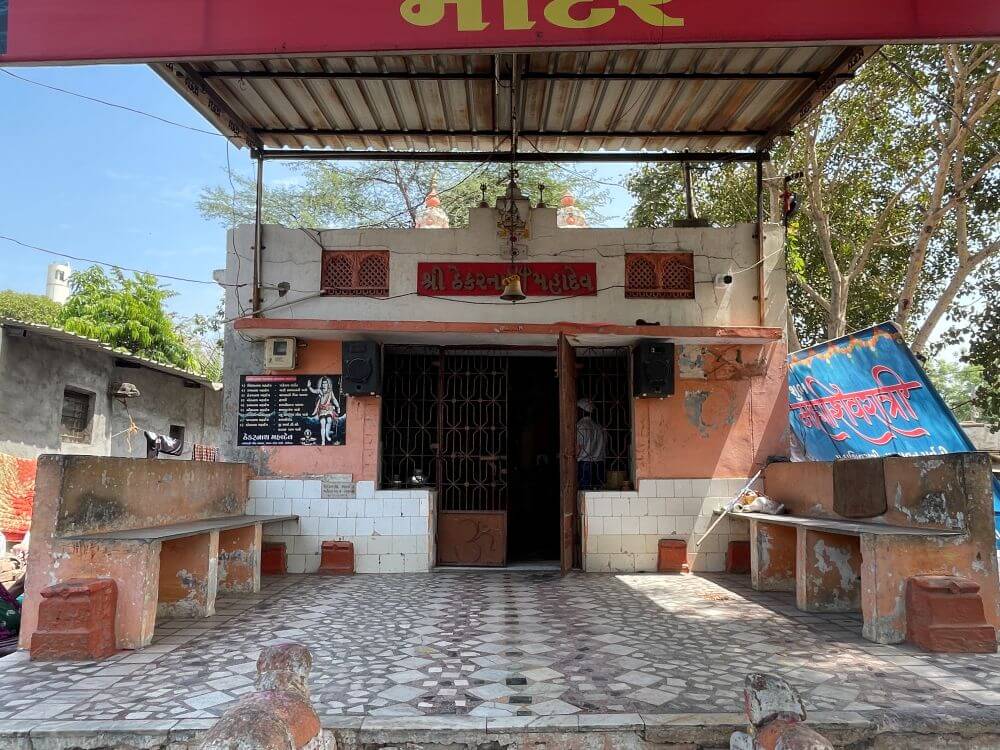 The temple has a small inner sanctum with shrines of Lord Ganesh and Hanuman. The entrance to the inner sanctum is constructed of stone and exhibits a trishakhiya (three-branched) design. At the lalata-bimba (lintel) position, there is a sculptural representation of Lord Ganesh in a dancing posture. At the uttaranga (upper section), there is ornamentation resembling a Kirtimukha (the face of glory), within which miniature icons of Lord Vishnu and Goddess Lakshmi are enshrined. Kirtimukhas are also present on the mandarka (architrave) of the entrance.
The temple has a small inner sanctum with shrines of Lord Ganesh and Hanuman. The entrance to the inner sanctum is constructed of stone and exhibits a trishakhiya (three-branched) design. At the lalata-bimba (lintel) position, there is a sculptural representation of Lord Ganesh in a dancing posture. At the uttaranga (upper section), there is ornamentation resembling a Kirtimukha (the face of glory), within which miniature icons of Lord Vishnu and Goddess Lakshmi are enshrined. Kirtimukhas are also present on the mandarka (architrave) of the entrance.
Within the sanctum sanctorum, a large stone Shivalinga is enshrined in a depression several inches below the ground level. Encompassing it is an octagonal brass pedestal (Shalunka). 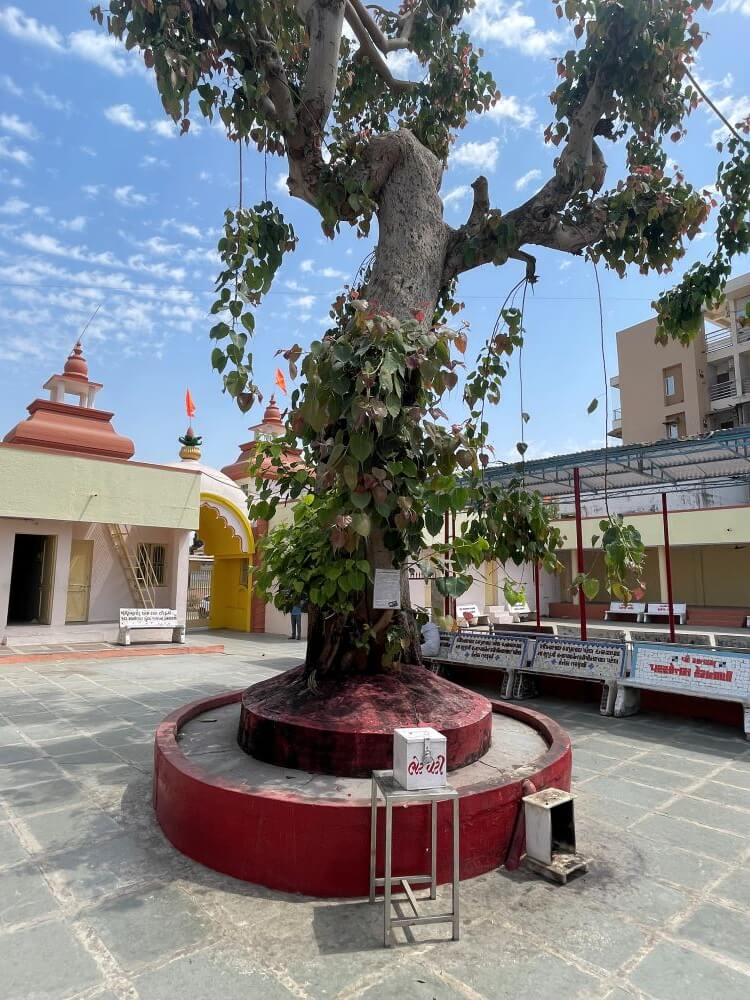 Various auspicious symbols, including the sacred Omkara, are engraved upon this pedestal. A substantial brass ablution vessel (Galantika) is suspended above the Shivalinga. Adjacent to the pedestal are sacred footprints (Paduka). On the posterior wall of the sanctum, within a sacred niche, resides the consecrated space of Mother Parvati.
Various auspicious symbols, including the sacred Omkara, are engraved upon this pedestal. A substantial brass ablution vessel (Galantika) is suspended above the Shivalinga. Adjacent to the pedestal are sacred footprints (Paduka). On the posterior wall of the sanctum, within a sacred niche, resides the consecrated space of Mother Parvati.
The sanctum of the temple is crowned with a lofty Urushrunga-type spire. Atop this is a substantial bi-tiered Amalaka, surmounted by a finial (Kalasha). Within the devakoshthaka (deity niches) on all four facets of the spire, images of Lord Ganesh, Lord Hanumanand various goddesses are meticulously carved. These sculptural representations, judging by their stylistic elements, appear to be of considerable antiquity.
Historical accounts indicate that Jagadguru Shankaracharya, Dongre Maharaj, Dayadil Maharaj of Bhavnagar, Giribaapu of Savarkundla and Swamiji of Savali performed the sacred Rudrabhisheka upon the Shivalinga herein. The temple permits divine audience (darshan) of Mahadev from 7 AM until 12 noon and from 4:30 PM until 8 PM. During Mahashivaratri and throughout the month of Shravana, darshan is permitted until 12:30 AM. It is a firmly established belief that sincere devotion to Lord Shiv at this sacred site fulfills all desires. 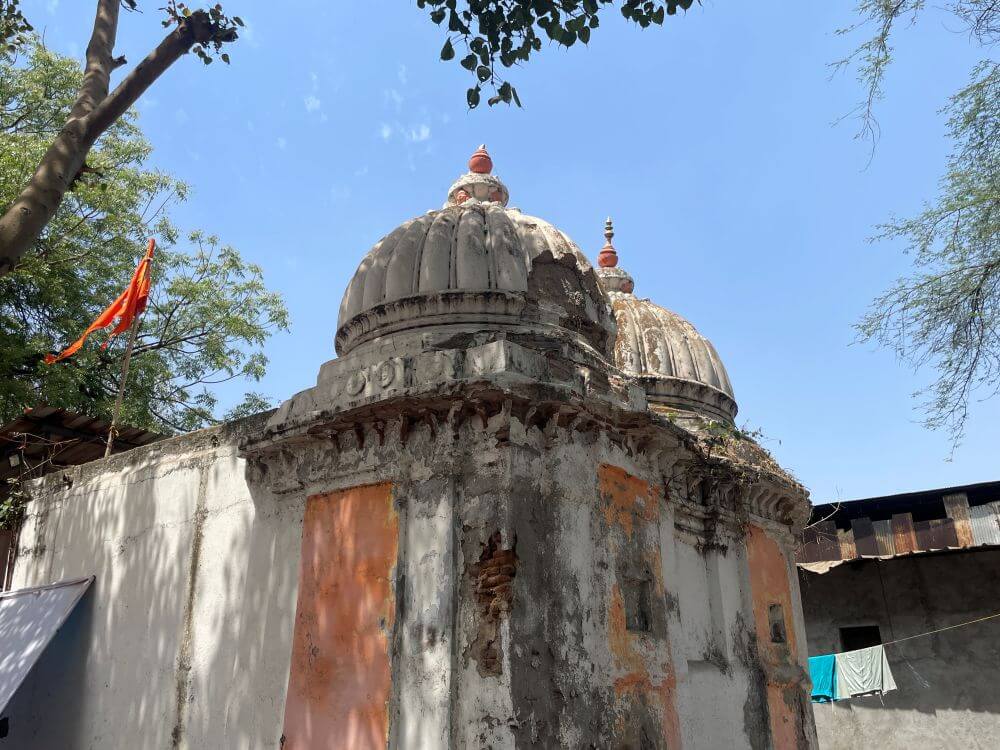 Numerous devotees maintain that performing ritualistic worship here expedites matrimonial alliances for those seeking marital union. On Mahashivaratri, devotees form extensive queues to receive the divine vision of Mahadev. During the month of Shravana, various sacerdotal ceremonies are conducted here. On the final Monday of this sacred month, at approximately 11:30 AM, the Kavad Yatra, which processes to the nine Nath temples within the city, arrives at this sacred destination. The temple administration arranges light refreshments for the devotees participating in this holy procession.
Numerous devotees maintain that performing ritualistic worship here expedites matrimonial alliances for those seeking marital union. On Mahashivaratri, devotees form extensive queues to receive the divine vision of Mahadev. During the month of Shravana, various sacerdotal ceremonies are conducted here. On the final Monday of this sacred month, at approximately 11:30 AM, the Kavad Yatra, which processes to the nine Nath temples within the city, arrives at this sacred destination. The temple administration arranges light refreshments for the devotees participating in this holy procession.
Thekernath Mahadev Temple
The Thekarnath Temple, one of the nine revered Nath temples in Vadodara, is situated in the Yakutpura area of the municipality. 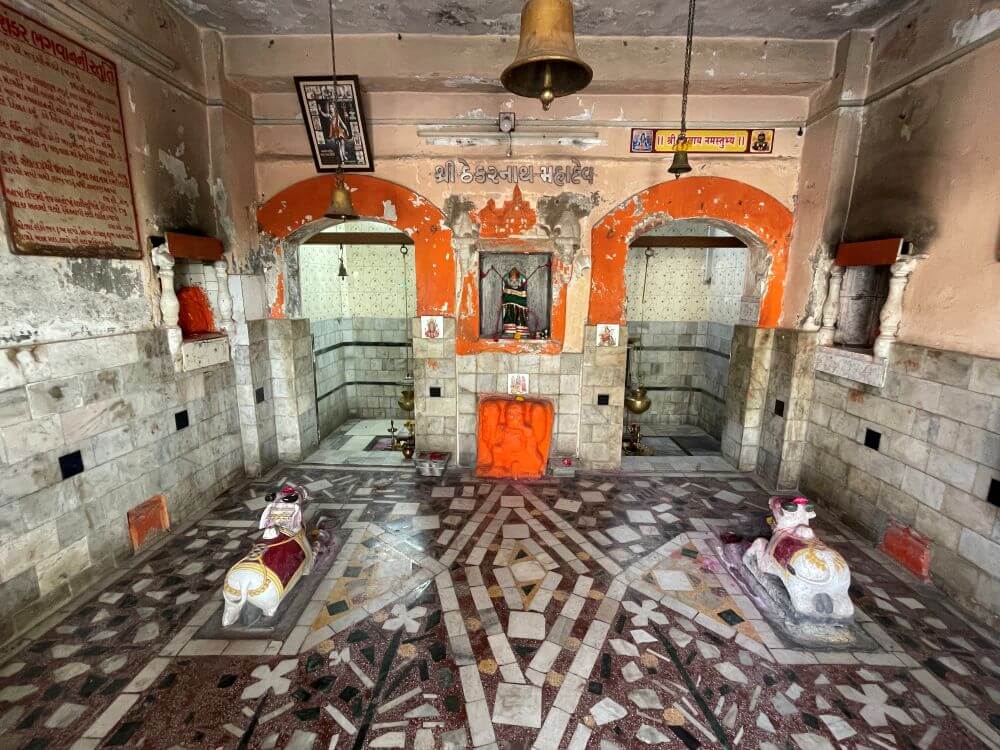 This sacred edifice, which holds the third position among Vadodara’s nine Nath temples, houses dual Shivalingas that receive veneration. Of these, one Shivalinga is self-manifested (Swayambhu) while the other was ritualistically established.
This sacred edifice, which holds the third position among Vadodara’s nine Nath temples, houses dual Shivalingas that receive veneration. Of these, one Shivalinga is self-manifested (Swayambhu) while the other was ritualistically established.
This stone-constructed temple stands upon a platform elevated three feet above ground level. Upon ascending four steps, one encounters an open courtyard. The upper section of this area is sheltered by a metal canopy. Seating accommodations have been arranged here for the faithful. As the temple contains two sanctums, it is crowned with dual domed spires. Upon entering through the iron entrance gate into the assembly hall, one is immediately greeted by the sight of twin Nandi sculptures positioned before both sanctums. 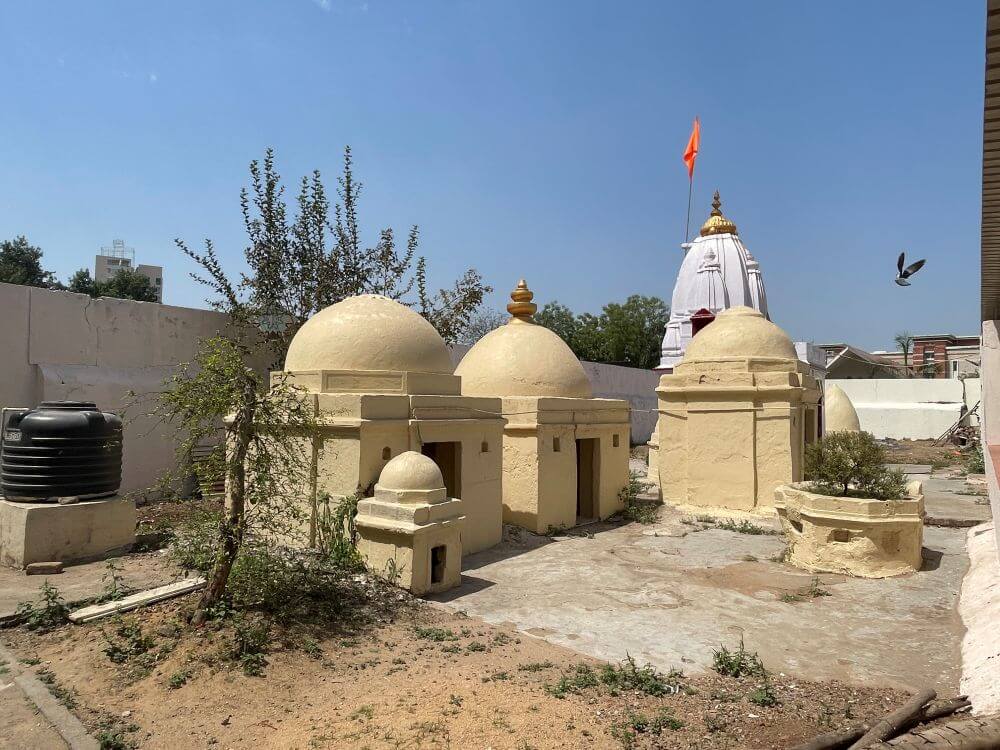 Within the sacred niches are enshrined Lord Ganesh and Lord Hanuman. Within the deity niche on the wall between the dual sanctums resides a crowned effigy of Lord Ram. Below this is a vermilion-adorned idol of Lord Ganesh.
Within the sacred niches are enshrined Lord Ganesh and Lord Hanuman. Within the deity niche on the wall between the dual sanctums resides a crowned effigy of Lord Ram. Below this is a vermilion-adorned idol of Lord Ganesh.
Both sanctums feature arched entrances. The sanctums are situated at a level slightly lower than the assembly hall. Within the left sanctum, the Shivalinga is encircled by a marble pedestal and a serpent forms a protective canopy over this Shivalinga. From the ablution vessel (Galantika) positioned above, continuous ritual bathing (abhisheka) of the Pindi (Shivalinga) occurs. Within the niche on the posterior wall behind the Pindi resides the consecrated space of Mother Parvati. 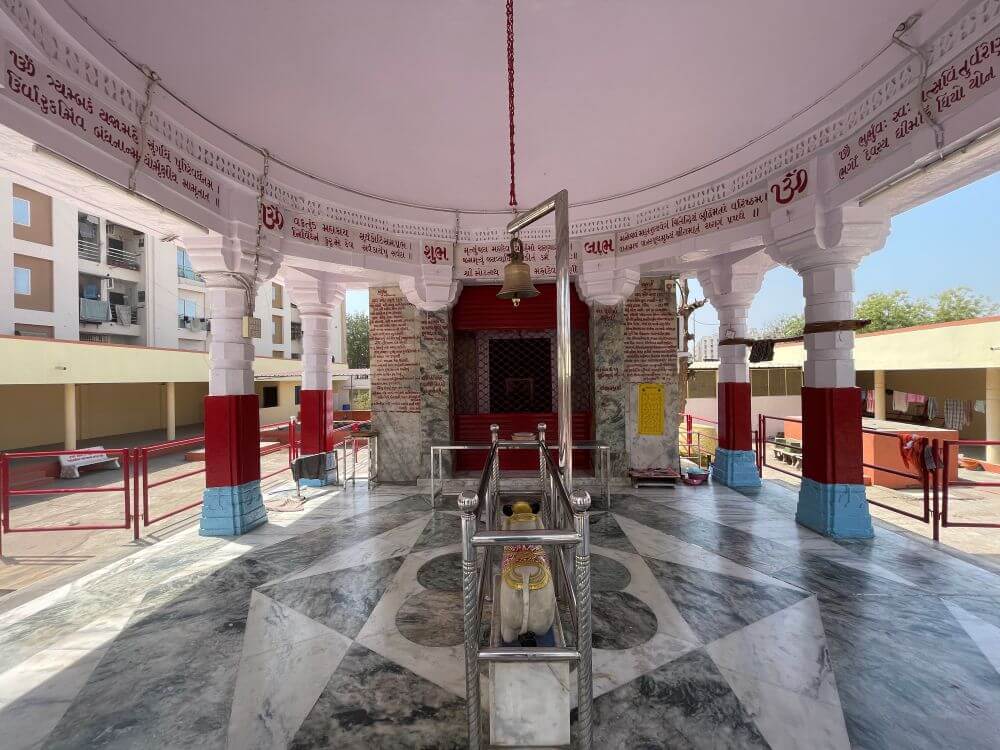 Within the right sanctum, there exists a pedestal crafted from five sacred metals (Panchadhatu) with a conch engraved upon it. A serpent fashioned from five metals forms a protective canopy over the Shivalinga herein. The Shivalinga receives perpetual abhisheka from the ablution vessel in the upper section. Above this is suspended a silver canopy.
Within the right sanctum, there exists a pedestal crafted from five sacred metals (Panchadhatu) with a conch engraved upon it. A serpent fashioned from five metals forms a protective canopy over the Shivalinga herein. The Shivalinga receives perpetual abhisheka from the ablution vessel in the upper section. Above this is suspended a silver canopy.
Several years ago, the temple underwent restoration by members of the Pital Khadewala community. Consequently, the second Shivalinga is also designated by the appellation ‘Pital Khadewala.’ Various religious observances are organized at this sacred site during Mahashivaratri and throughout the month of Shravana. During Shravana, devotees engage in japa (sacred recitation) and tapa (spiritual austerities) at this location. On the final Monday of Shravana, the Kavad Yatra that commences from the municipality arrives at this sacred destination.



